L02 Cellular Reproduction
General Features of Chromosomes
Structure of Chromosomes
1. Composition
chromosomes are structures within living cells that contain the genetic material.
- They contain the genes
Biochemically, chromosomes are composed of
- DNA, which is the genetic material
- Proteins, which provide an organized structure
- In eukaryotes the DNA‐protein complex is called chromatin (染色质)
染色质 = 染色体,因此一些细菌中的环形DNA分子也可以称之为染色体
p = short arm (petit in French)
q = long arm (chosen as next letter in alphabet after p)
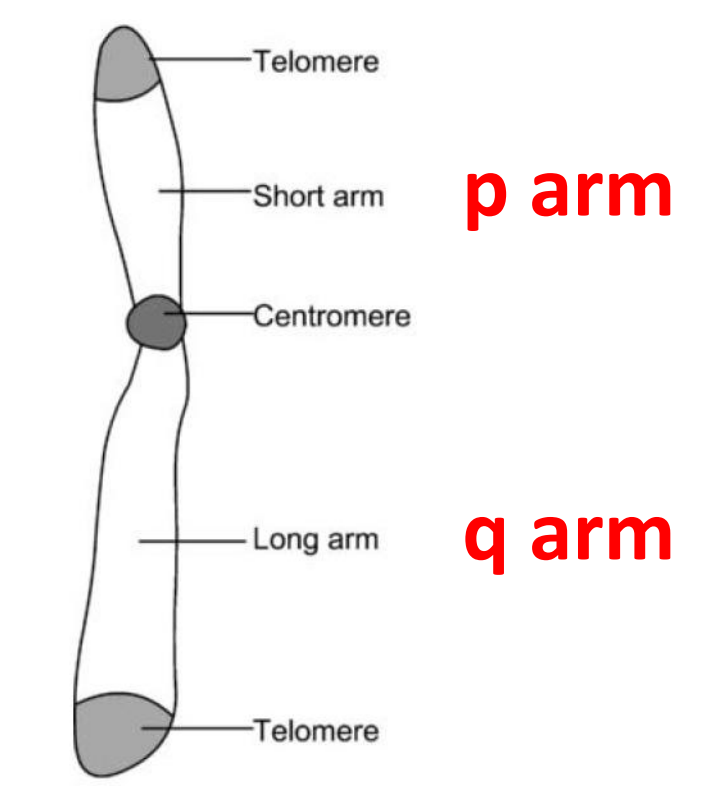
2. Telomere
**端粒:**(英语:Telomere)是真核生物染色体末端的DNA重复序列,作用是保持染色体的完整性和控制细胞分裂周期。
由于DNA复制的机制,每次染色体复制后,延迟股上的染色体末端必无法被复制。[1]因此,真核生物在染色体末端演化出端粒以作为可被重复遗弃的片段。[2]一旦端粒消耗殆尽,细胞将会立即启动凋亡机制。
3. Histone 核小体
核小体是染色体结构的最基本单位。核小体的核心是由4对组织蛋白(H2A、H2B、H3和H4)各两个分子构成的扁球状8聚体。
DNA分子缠绕在核小体上,组成的条带总共进行四次螺旋化处理(螺旋后的条带再次进行螺旋,形成超螺旋的结构),使得DNA分子的长度大大被压缩。脱氧核糖核酸分子一共被压缩了7×6×40×5=8400倍。例如,人的染色体中脱氧核糖核酸分子伸展开来的长度平均约为几个厘米,而染色体被压缩到只有几个微米长。
Chromatid(染色单体) vs Chromosome(染色体)
A chromatid is one of two identical halves of a replicated chromosome.
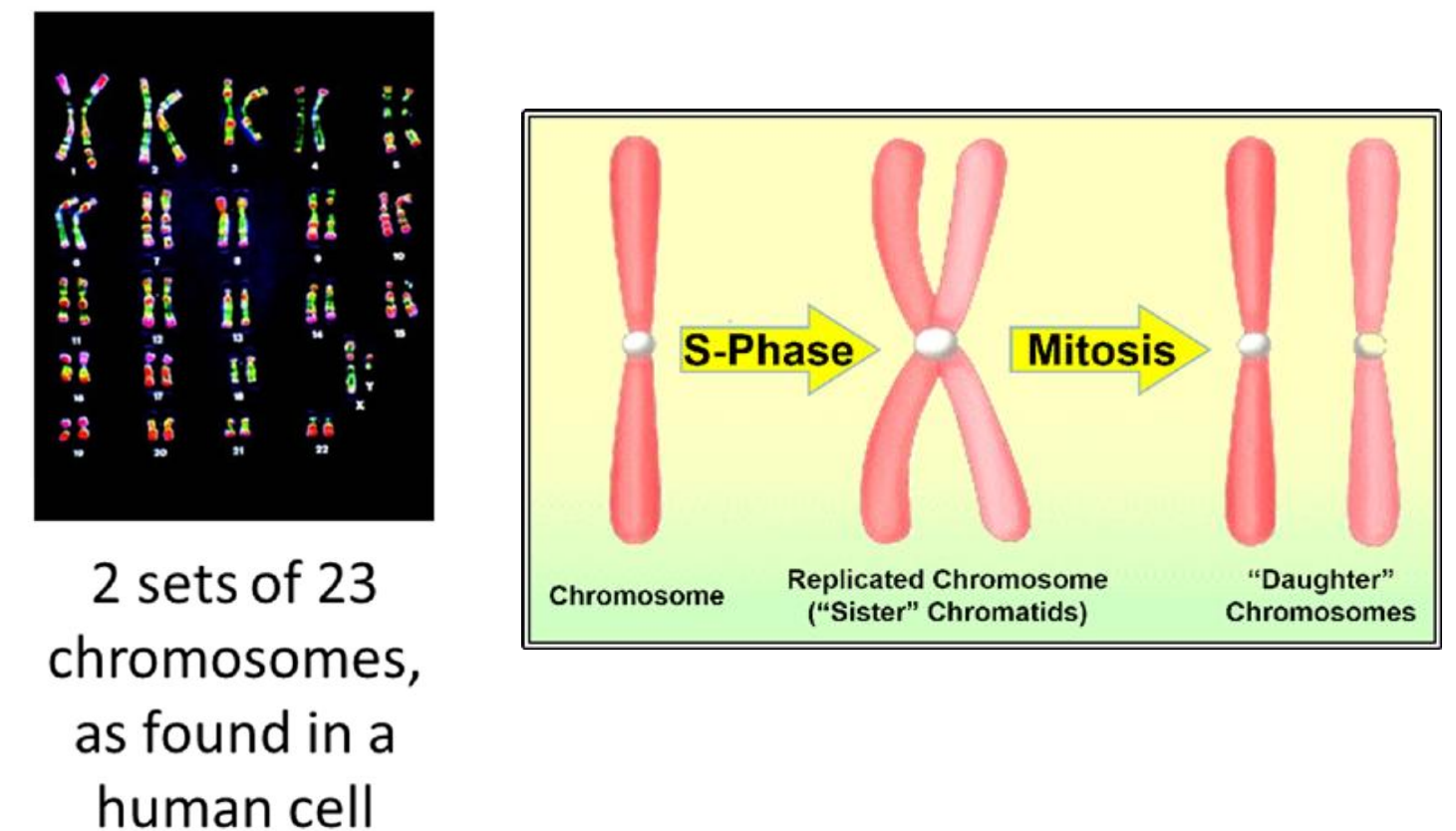
Prokaryotic and Eukaryotic Cell‘s Chromosomes
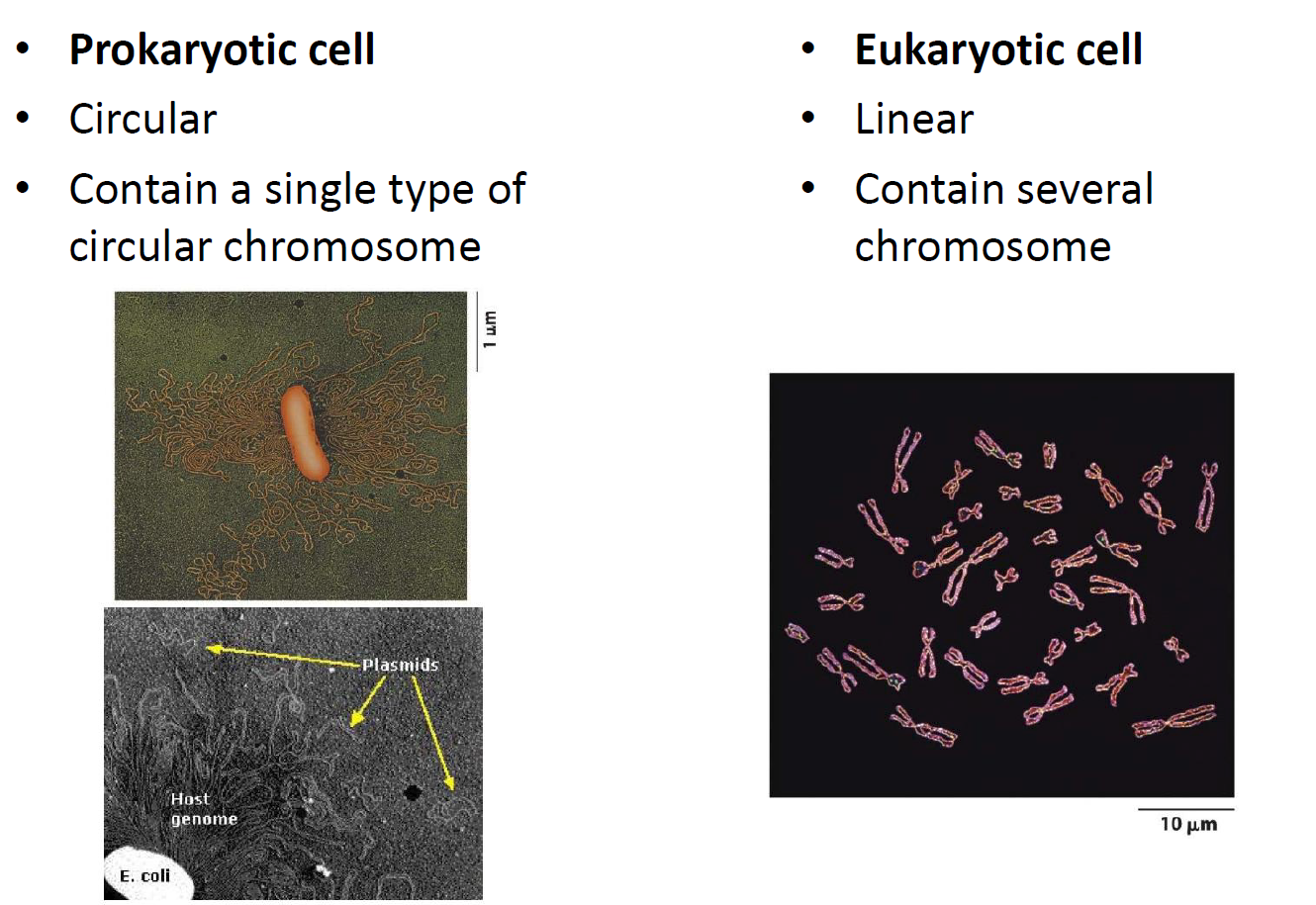
Prokaryotic cell:
- Circular
- Contain a single type of circular chromosome
Eukaryotic cell:
- Linear
- Contain several chromosome
Plasmids And Vectors
The relationship between microbes and plasmid DNA is not parasitic.
- plasmids provide a mechanism for horizontal genetransfer within a population of microbes and typically provide a selective advantage under a given environmental state.
- Plasmids may carry genes that provide resistance to naturally occurring antibiotics in a competitive environment
Vectors: Artificial plasmids widely used in molecular cloning

Chromosome Number
Somatic cell(体细胞): two copies of each chromosomes (Diploid, 2n)
Gametes(配子) : one copy of each chromosomes (Haploid, n)
$$
\text{n = basic chromosome number }
$$
- Triploid (3n)
- Tetraploid (4n)
- Hexaploid (6n)
- Octoploid (8n)
Homologous Chromosomes
Homologous chromosomes are chromosome pairs:
- one from each parent
- similar in length, centromere location and gene position.
However, the genes may contain different alleles.
The DNA sequences on homologous chromosomes are also very similar
- There is usually less than 1% difference between homologs
Nevertheless, these slight differences in DNA sequence provide the allelic differences in genes
- Eye color gene, e.g. Blue allele vs. brown allele
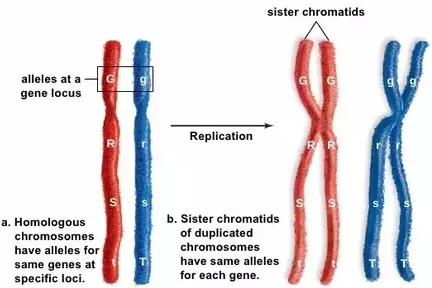
PAR(拟常染色体区) in sex chromosomes
The X and Y chromosomes have two regions of homology on the tips of chromosomes.
Pseudoautosomal genes in this region are not inherited in a strictly sex‐linked fashion.
(该区域的假常染色体基因并不是严格的性别连锁遗传。)
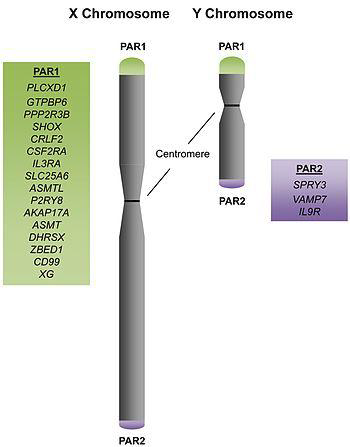
1. PAR1
PAR1 is located at the terminal region of the short arms, contains 24 genes.
2. PAR2
PAR2 at the tips of the long arms of these chromosomes, contains only 4 genes.
3. Sex-determining region of the Y(SRY)
SRY基因(sex-determining region of Y-chromosome,全称:Y染色体性别决定区),又名睾丸决定因子,(英语:Testis-determining factor,简称TDF)是人体Y染色体上的一段基因片段,该基因是决定男性睾丸发育的主要基因。存在于Y染色体的短臂末端上。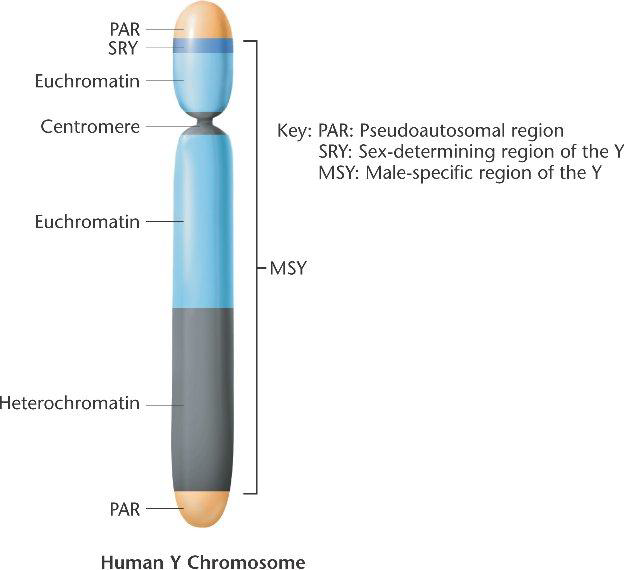
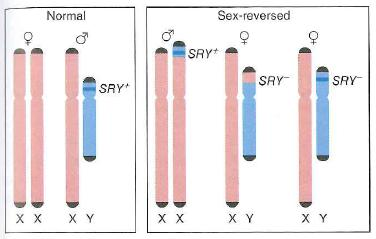
Cell Divition
Prokaryotes——Binary Fission 二分裂
A mother cell divides to produce two daughter cells.
The mother cell’s chromosome is duplicated prior to fission.
Each daughter cell receives one copy of the chromosome.
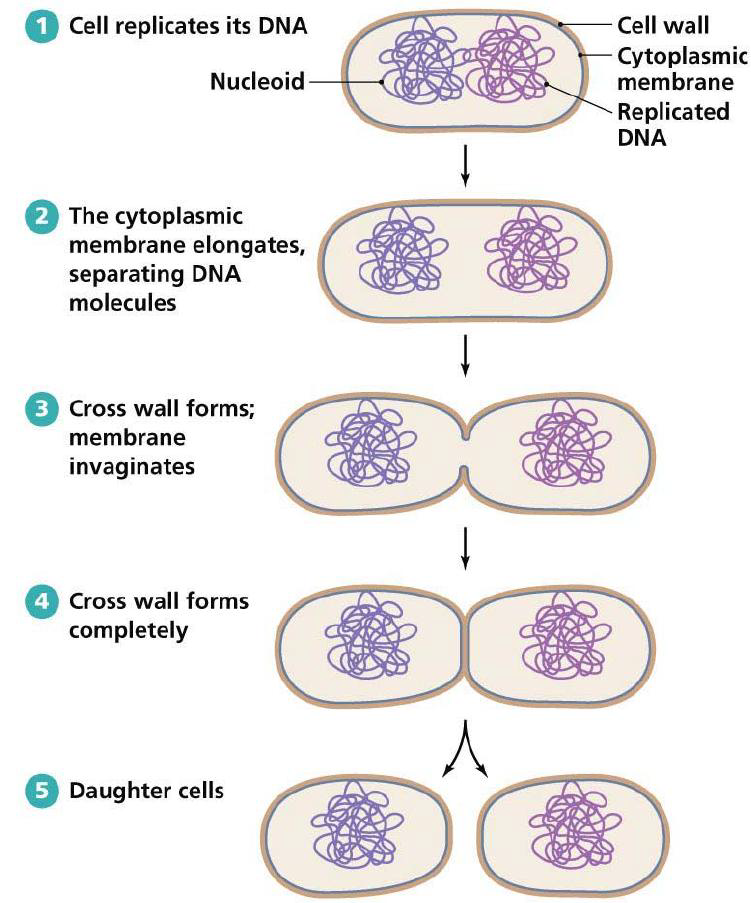
Cell Divition in Eukaryotes
1. Introduction
Cell division in eukaryotes requires a replication and sorting process that is more complicated than simple binary fission
Eukaryotic cells that are destined to divide progress through a series of stages known as the cell cycle
The cell cycle, or cell-division cycle, is the series of events that take place in a cell leading to duplication of its DNA (DNA replication) and division of cytoplasm and organelles to produce two daughter cells.
The length of cell cycle varies among different types of cells
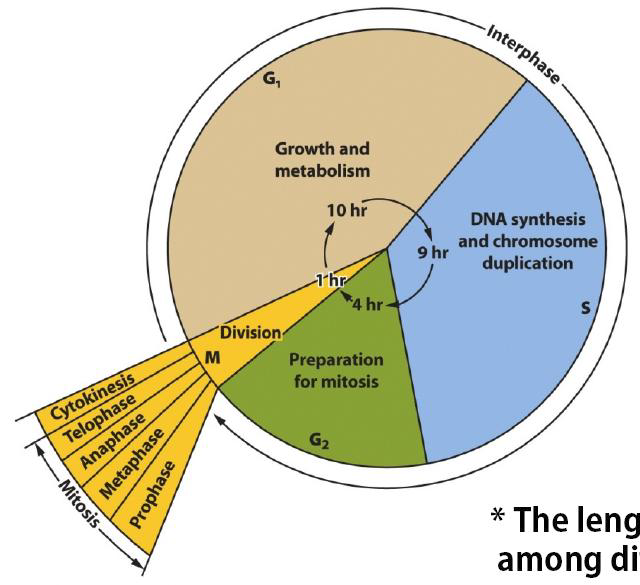
2. Cell-cycle
During the G2 phase, the cell accumulates the materials that are necessary for nuclear and cell division
It then progresses into the M phase of the cycle where mitosis occurs
The primary purpose of mitosis is to distribute the replicated chromosomes to the two daughter cells
- In humans for example,
- The 46 pairs of sister chromatids are separated and sorted
- Each daughter cell receives the same complement of chromosomes
Mitosis
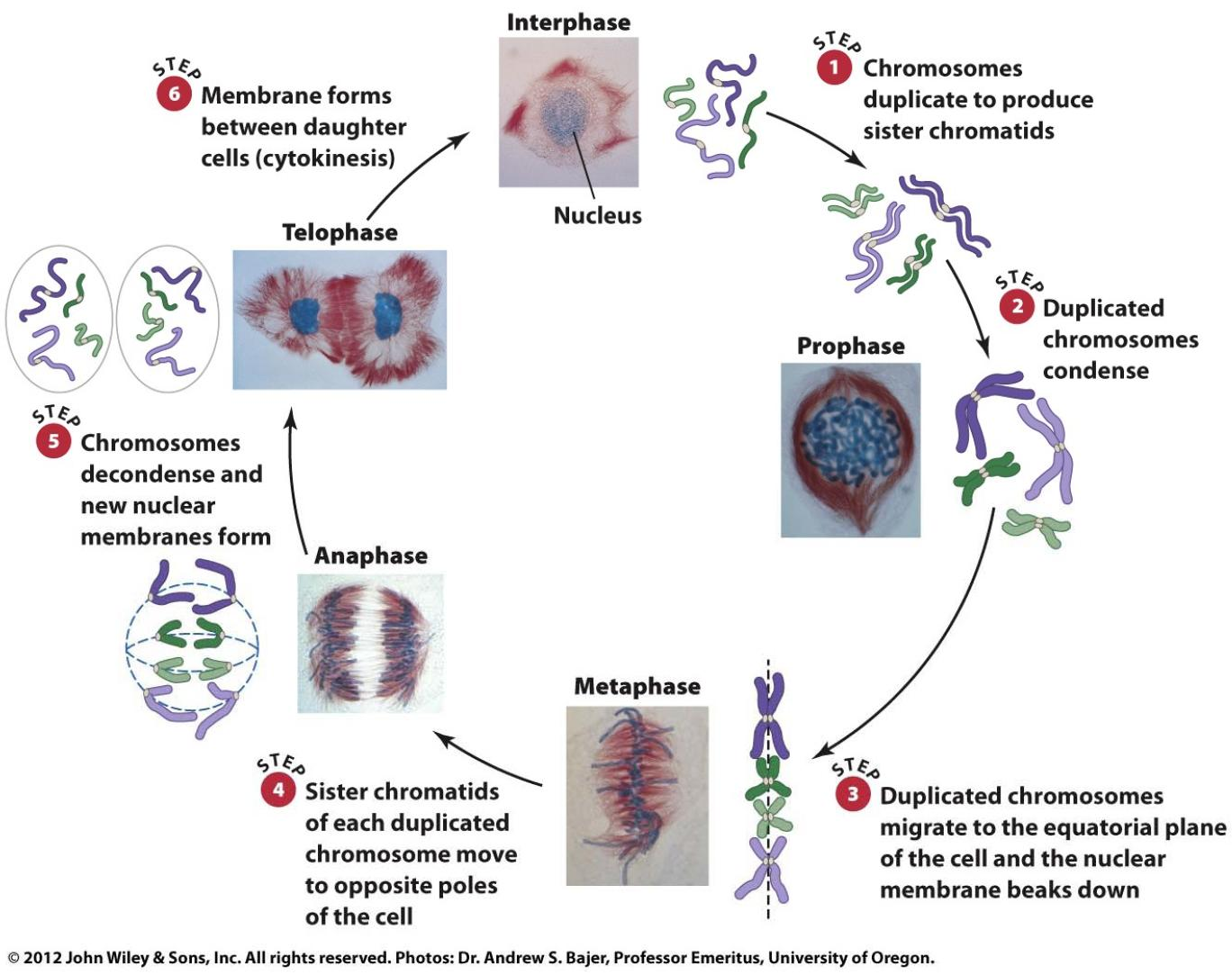
Clone: to create a population of cells
Fission: The subdivision of a cell or multi-cellular body into one or more parts and the regeneration of each part into a complete individual
Colony:a mass of cells
1. Prophase
Spindle Formation
The initiation of spindle formation and the condensation of duplicated chromosomes from the diffuse network of chromatin are hallmarks of the first stage of mitosis, called prophase
- Formation of the spindle is accompanied by fragmentation of many intracellular organelles—for instance, the endoplasmic reticulum and the Golgi complex.
Disappearance of Nucleolus And Nuclear Membrane
The nucleolus, a dense body involved in RNA synthesis within the nucleus, also disappears; however, other types of organelles such as mitochondria and chloroplasts remain intact.
Concomitant with the fragmentation of the endoplasmic reticulum, the nuclear membrane (also known as the nuclear envelope) breaks up into many small vesicles, and microtubules formed within the cytoplasm invade the nuclear space.
Microtubules Attach to The Kinetochores
Some of these microtubules attach to the kinetochores(着丝点), which are protein structures associated with the centromeres of the duplicated chromosomes. Attachment of spindle microtubules to the kinetochores indicates that the cell is entering the metaphase of mitosis.
2. Metaphase
Chromosomes Move to Metaphase Plate
During metaphase the duplicated chromosomes move to positions midway between the spindle poles.
This movement is leveraged by changes in the length of the spindle microtubules and by the action of force-generating motor proteins that work near the kinetochores.
The spindle apparatus also contains microtubules that are not attached to kinetochores. These additional microtubules appear to stabilize the spindle apparatus.
Through the operation of the spindle apparatus, the duplicated chromosomes come to lie in a single plane in the middle of the cell. This equatorial plane is called the metaphase plate.
At this stage, each sister chromatid of a duplicated chromosome is connected to a different pole via microtubules attached to its kinetochore. (在这个阶段,每个复制染色体的姐妹染色单体通过连接在着丝点上的微管连接到不同的极点) This polar alignment of the sister chromatids is crucial for the equal and exact distribution of genetic material to the daughter cells.
3. Anaphase
Chromatids Saparated And Move to The Two Pores
The sister chromatids of duplicated chromosomes are separated from each other during the anaphase of mitosis.
This separation is accomplished by (1) shortening the microtubules attached to the kinetochores and by (2) degrading materials that hold the sister chromatids together.
As the microtubules shorten, the sister chromatids are pulled to opposite poles of the cell. The separated sister chromatids are now referred to as chromosomes.
While the chromosomes are moving toward the poles, the poles themselves also begin to move apart. This double movement cleanly separates the two sets of chromosomes into distinct spaces within the dividing cell.
4. Telophase And Cytokinesis
Nuclear Membrane And Decondensation of Chromosomes
Once this separation has been achieved, the chromosomes decondense into a network of chromatin fibers, and the organelles that were lost at the onset of mitosis re-form.
Each set of chromosomes becomes enclosed by a nuclear membrane. The decondensation of the chromosomes and the restoration of the internal organelles are characteristic of the telophase of mitosis.
When mitosis is complete, the two daughter cells are separated by the formation of membranes between them. In plants, a wall is also laid down between the daughter cells.
This physical separation of the daughter cells is called cytokinesis(胞质分裂)
Sex Reproduction
Sexual reproduction is the most common way for eukaryotic organisms to produce offspring
- Parents make gametes with half the amount of genetic material (gametogenesis, 配子发生)
- These gametes fuse with each other during fertilization (受精作用) to begin the life of a new organism
Gametes are typically haploid
- They contain a single set of chromosomes
- A diploid human cell contains 46 chromosomes
- A human gamete contains only 23 chromosomes
During **meiosis **(减数分裂), haploid cells are produced from diploid cells
Thus, the chromosomes must be correctly sorted and distributed to reduce the chromosome number to half its original value
- In humans, for example, a gamete must receive one chromosome from each of the 23 pairs
Gametogenesis 配子发生
isogamous (同型配子生殖)
They produce gametes that are morphologically similar
- Example: Many species of fungi and algae
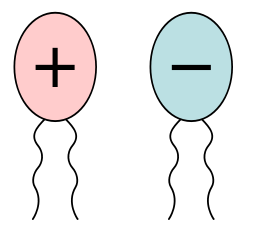
heterogamous (异形配子生殖)
These produce gametes that are morphologically different
Sperm cells (male gametes)
- Relatively small and mobile
Egg cell (female gametes)
- Usually large and nonmobile
- Stores a large amount of nutrients (animal species)
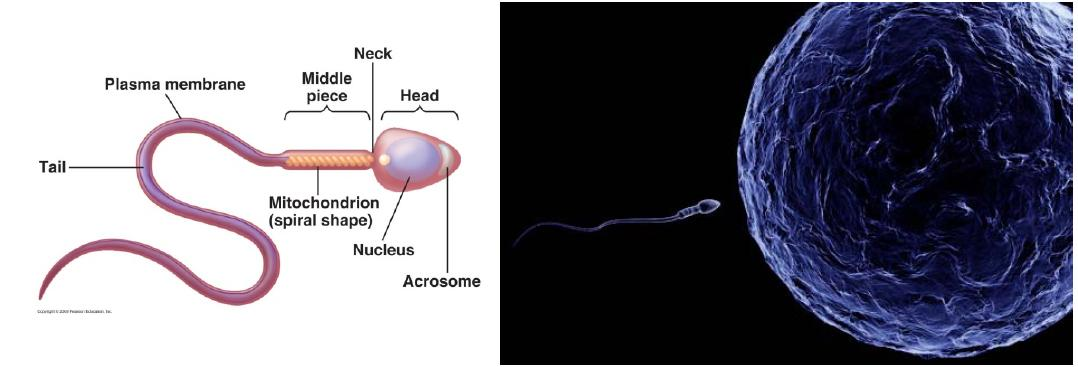
Meiosis
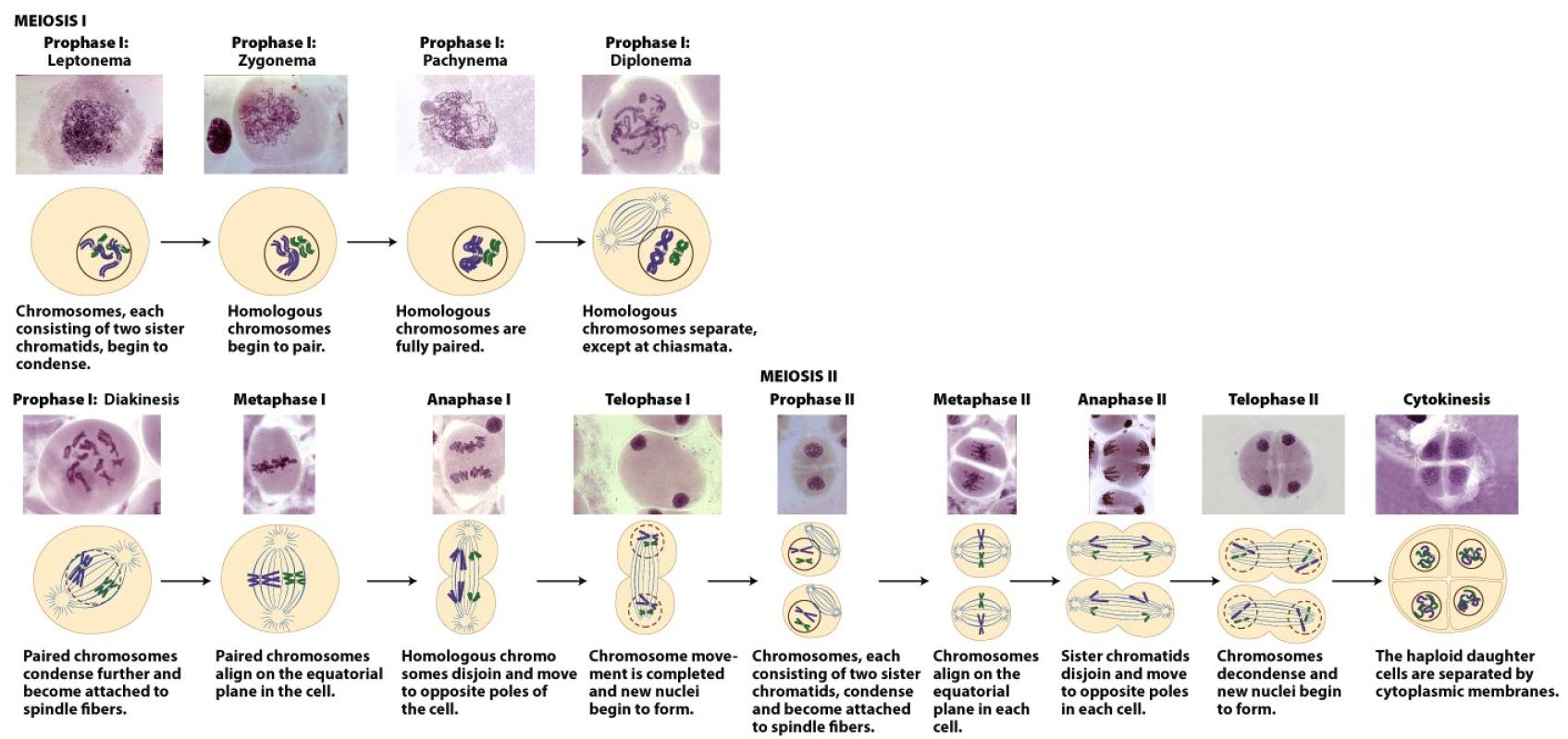

1. Prophase I
Prophase I: Leptonema(细线期)
The term leptonema derives from Greek words meaning “thin threads”.
Chromosomes condense
Each chromosome has two sister chromatids
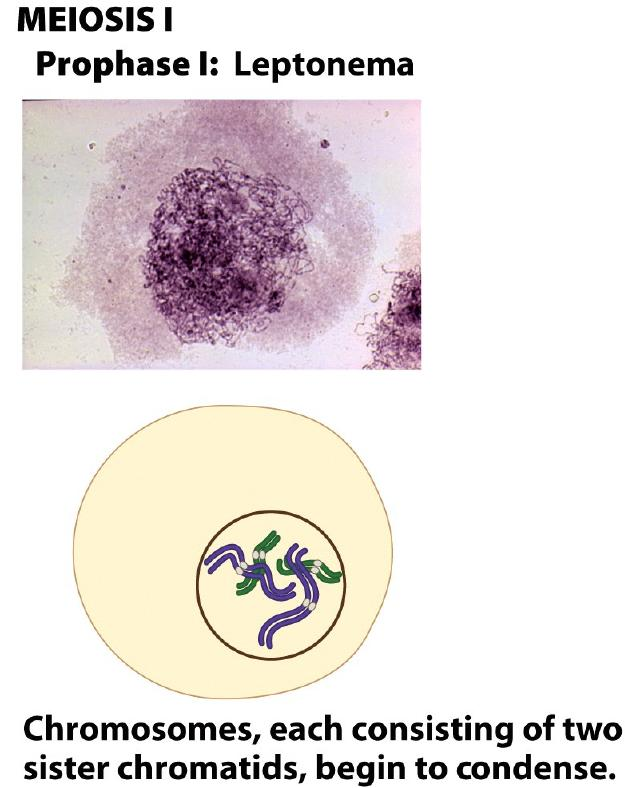
Prophase I: Zygonema(偶线期)
The term zygonema derives from Greek words meaning “paired threads”.
Pairing of homologous chromosomes (Synapsis,联会)
Synaptonemal complex
But the precise role is not clear
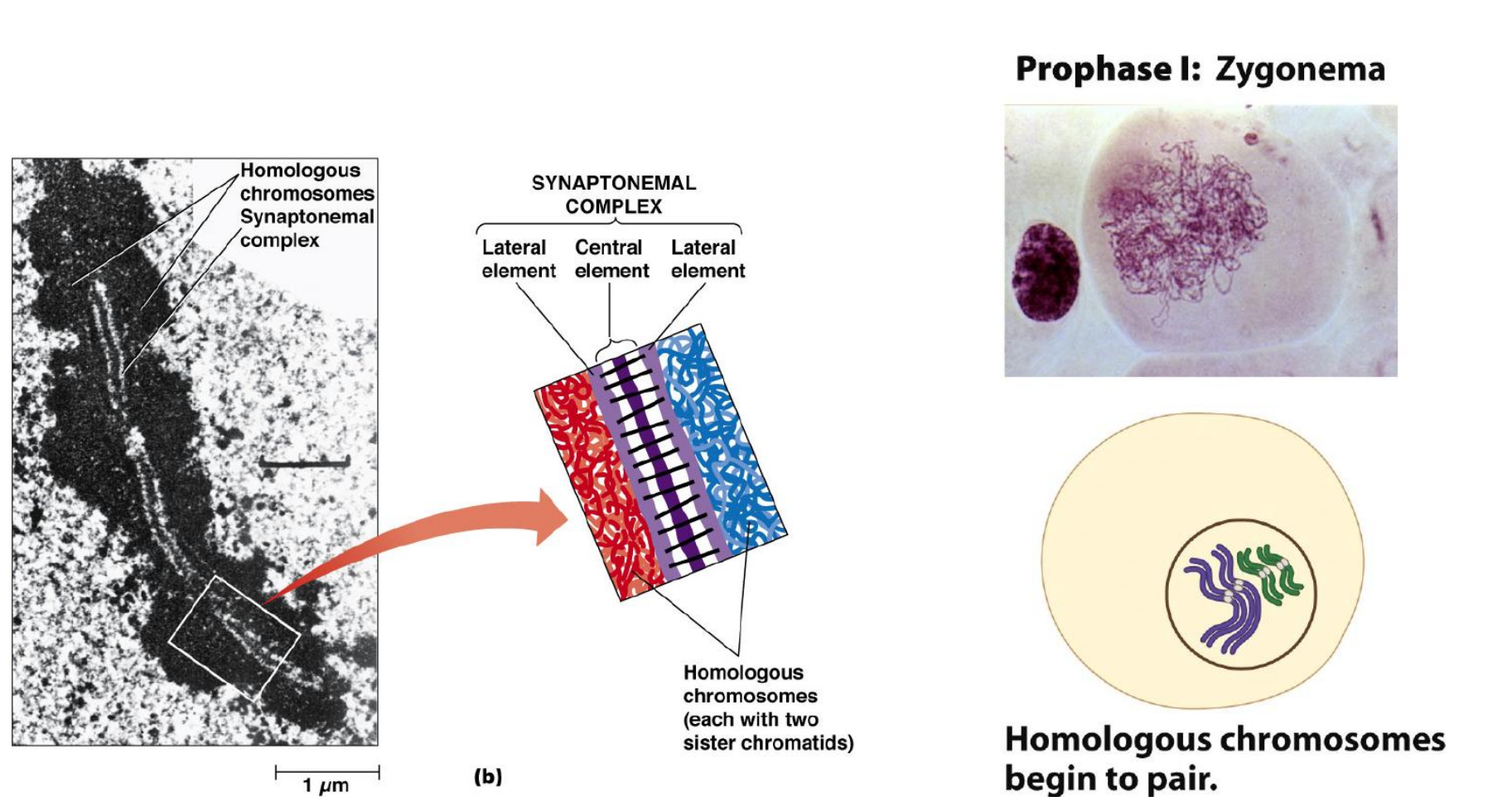
(1) Synaptonemal complex 联会丝复合体

Prophase I: Pachynema(粗线期)
The term pachynema derives from Greek words meaning “thick threads”.
Chromosomes condense further (can easily been seen with a light microscope)
- Paired chromosomes may exchange materials (Crossing over occurs)

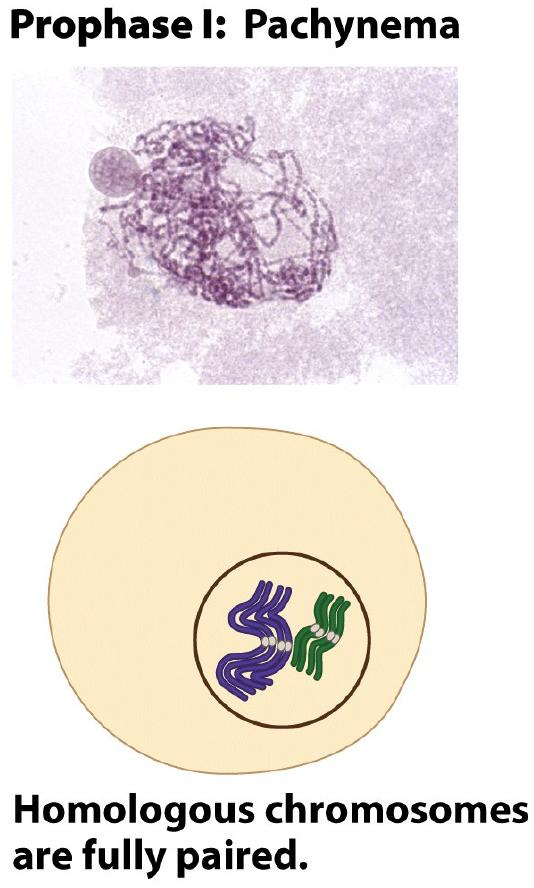
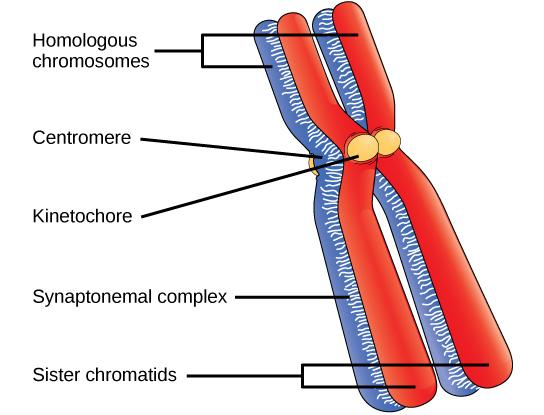
Prophase I: Diplonema(双线期)
The term diplonema derives from Greek words meaning “two threads”.
The synaptonemal complex degrades and paired chromosomes separate slightly but are in contact as chiasmata(染色体交叉).
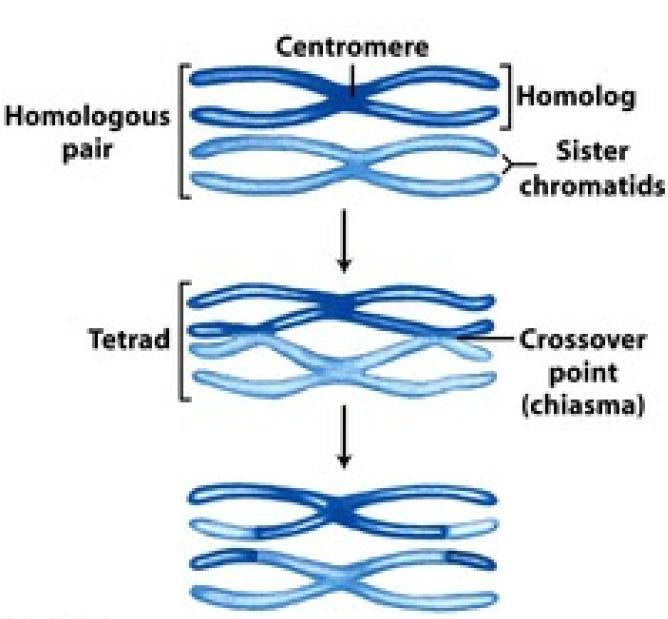
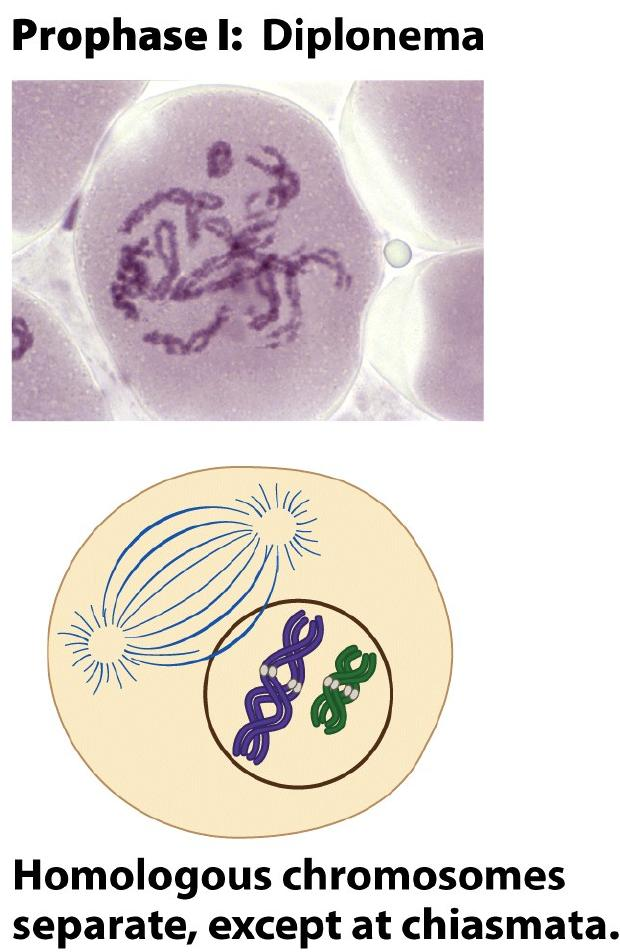
(1) Chiasmata
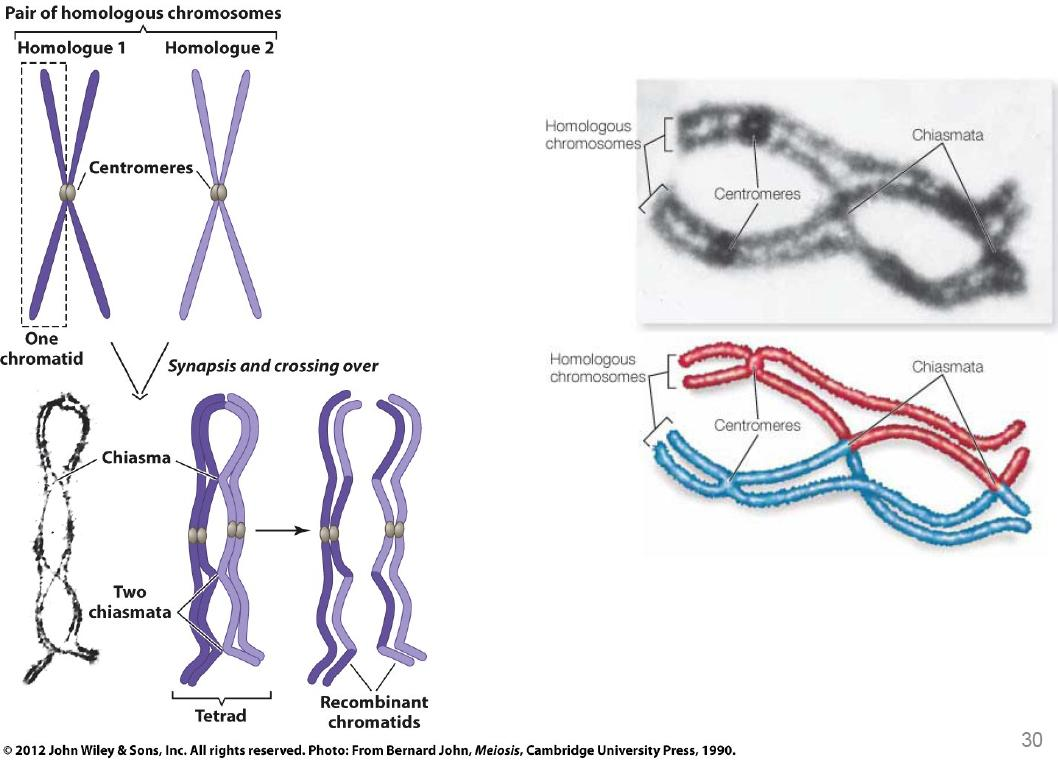
Prophase I: Diakinesis(终变期/浓缩期)
The term diakinesis derives from Greek words meaning “move through”.
- Nuclear envelope fragements
- Spindle fibers attach to kinetochores (动粒/动点)
- Chromosomes (Tetrad; 四分体) move to central plane in pairs
(1) kinetochores
Kinetochores:a complex of proteins associated with the centromere of a chromosome during cell division, to which the microtubules of the spindle attach.
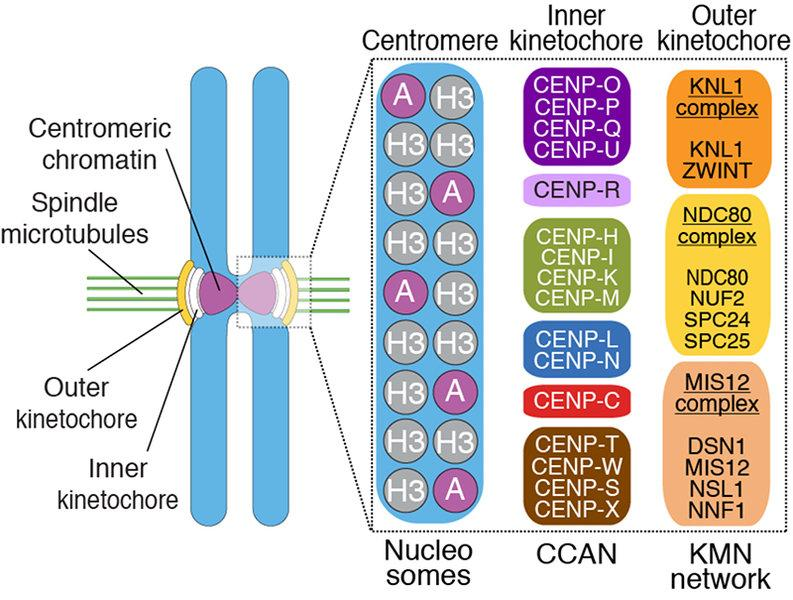
Summery of Prophase I
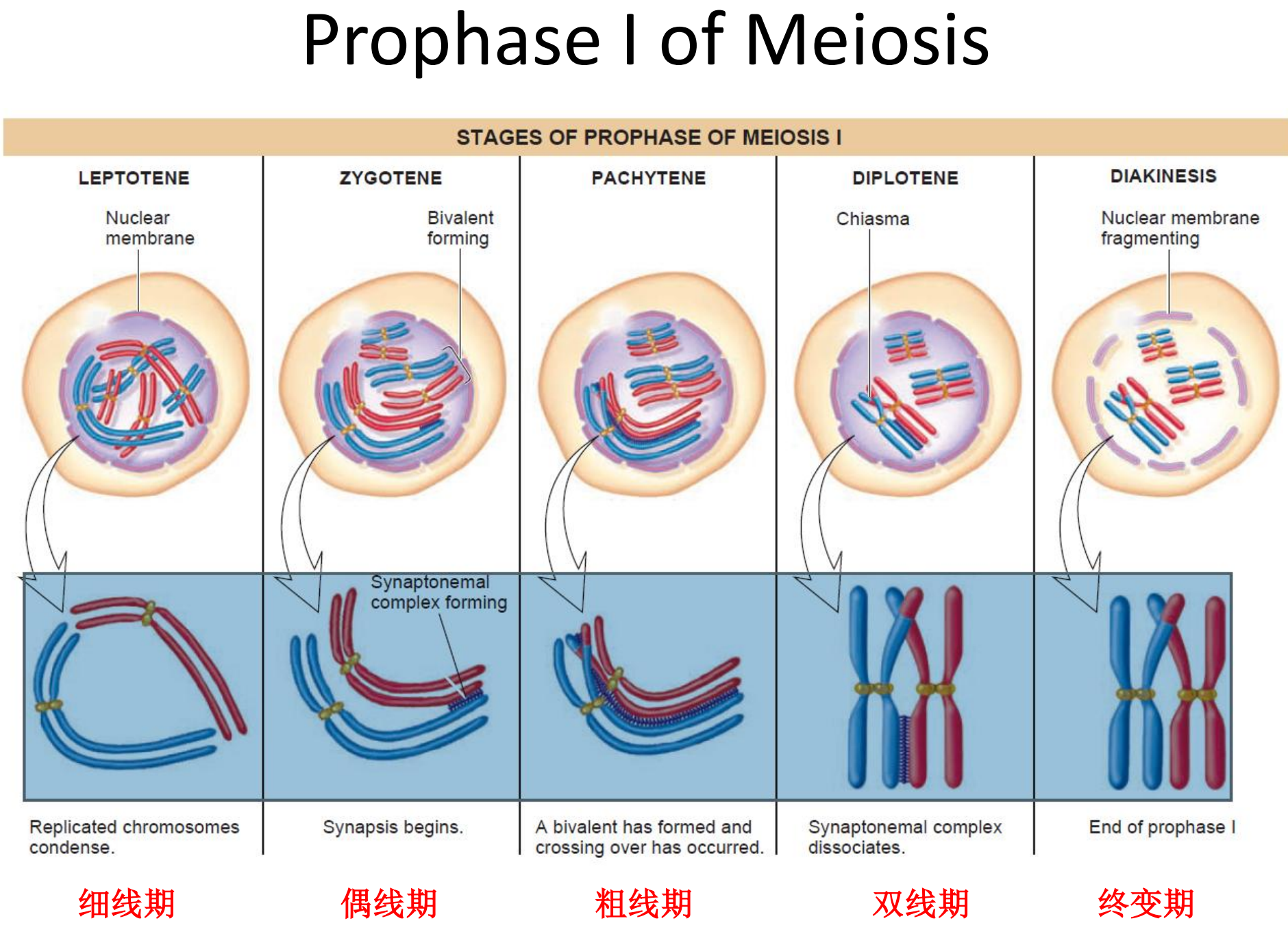
2. Metaphase I
Paired chromosomes are oriented toward opposite poles
3. Anaphase I
Resolve chiasmata
Chromosome disjunction (separation of paired chromosomes)
Separated homologues move toward opposite poles
4. Telophase I
- Chromosomes reach the poles; nuclei forms
- Spindle apparatus is disassembled (解开)
- Daughter cells separated by membranes
- Chromosomes decondense
- Each chromosome still has two sister chromatids
5. Prophase II
Meiosis II, mechanistically similar to mitosis
Chromosomes condense
Chromosomes attach to a new spindle apparatus
Sister chromatids are attached to spindle fibers from opposite poles
6. Metaphase II
Chromosomes align at equatorial plane
7. Anaphase II
- Centromeres split
- Chromatid disjunction
- Sister chromatids become daughter chromosomes and move toward opposite poles
8. Telophase II
Chromosomes gather at poles; daughter nuclei form
Each daughter nucleus contains a haploid set of chromosomes
9. Cytokinesis
Daughter cells are NOT genetically Identical.
- Homologous chromosomes synapse and exchange material by crossing over, then disjoin.
- Different pairs of homologous chromosomes disjoin independently.
三、Sex Determination
Sex Determination in Human
- Females are XX
- Males are XY
- During meiosis in males, the X and Y chromosomes pair
1. SRY
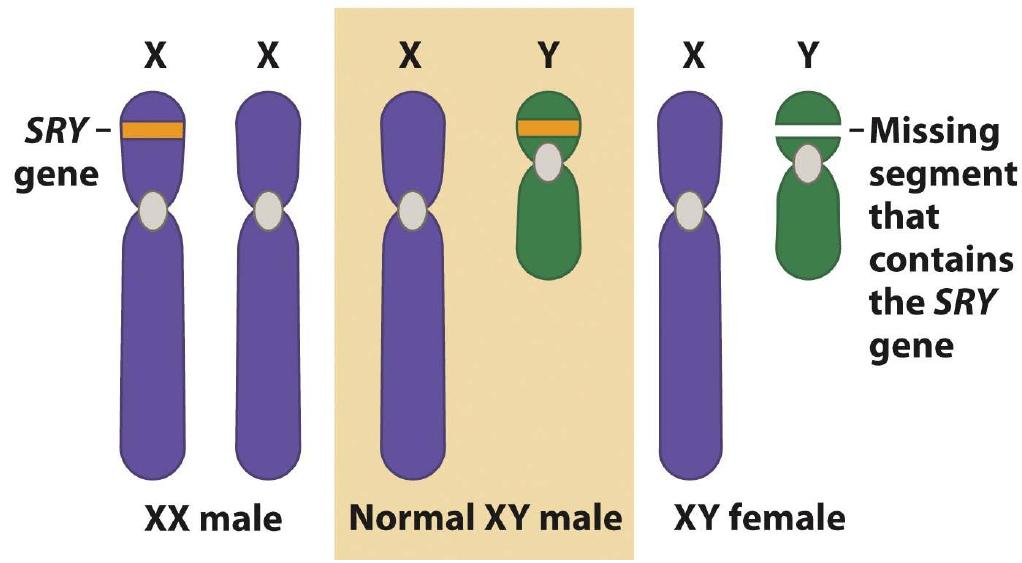
SRY Protein
SRY protein bond to DNA minor group
Identification of SRY sequence, which is not present in the maternal genome, can be performed using PCR (Polymerase chain reaction).
Other Sex Determination Mechanisms
1. The ZW system
Male: ZZ
Female: ZW
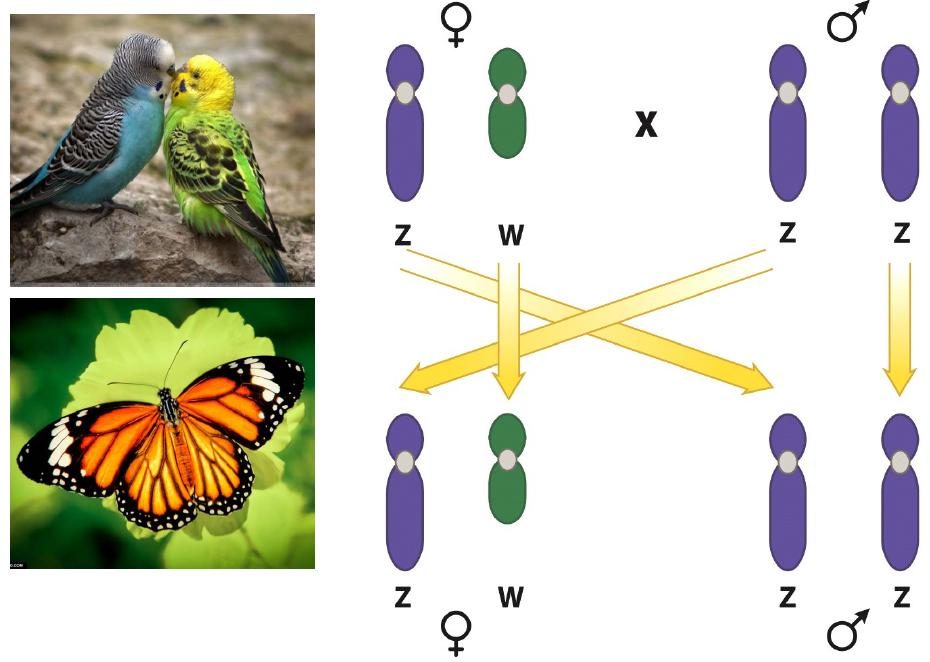
2. The X0 system
Inheritance of sex chromosomes in animals with XX females and X0 males.
grasshoppers, crickets, cockroaches, and some other insects.
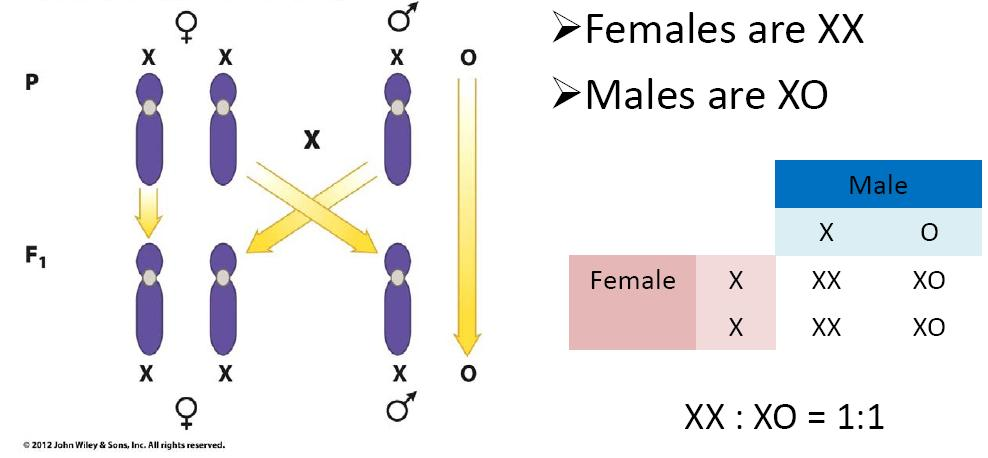
3. X:A Ratio (Sex Determination in Drosophila 果蝇)
X:A Ratio is : The Ratio of X Chromosomes to Autosomes
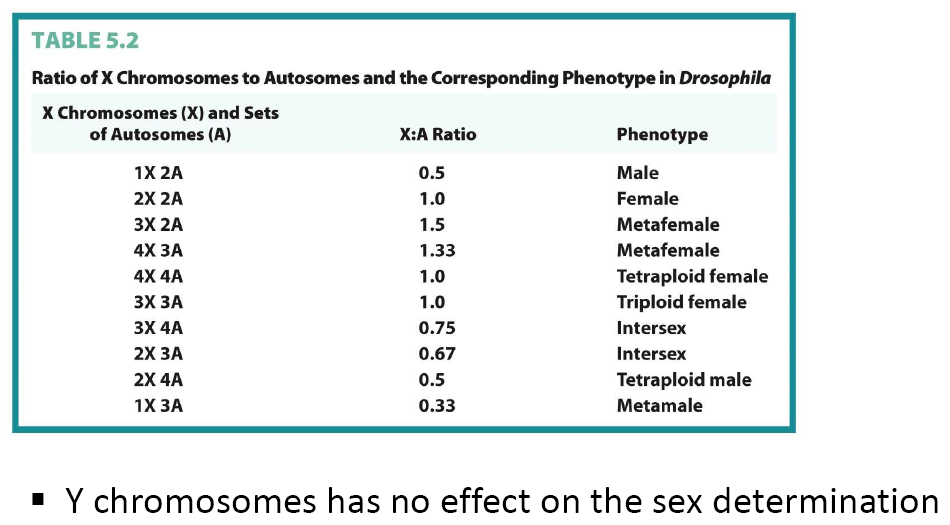
4. The Haplo-Diplo system
Honeybee use this system

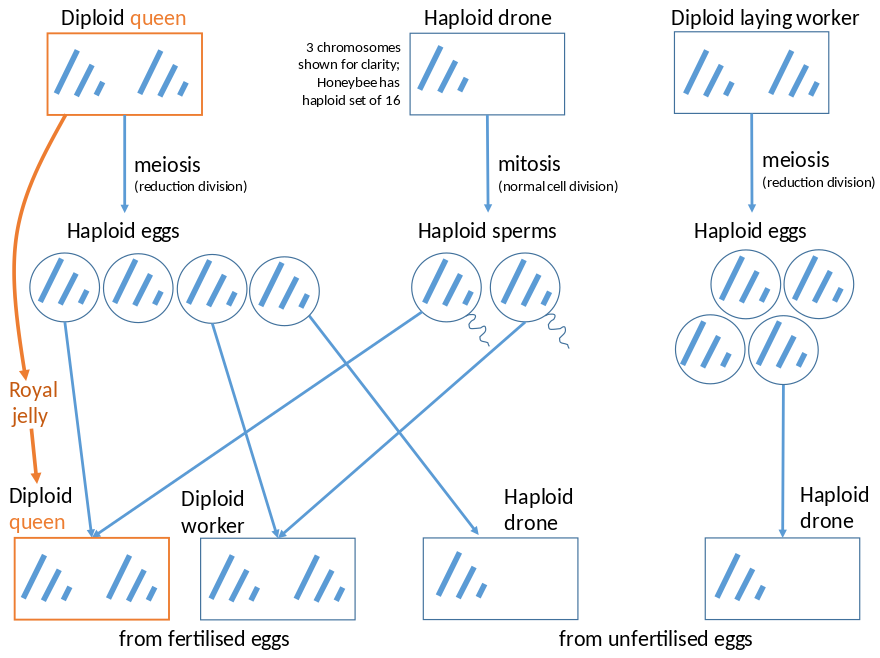
Genetic relatedness: if a queen bee mates with only one drone, any two of her daughters will share, on average, 75% of their genes.